
Building a Future for Burrowing Owls
Imagine Southern California with no freeways. Imagine the flat mesa tops with no houses, and open grassland for miles. Against that backdrop, western burrowing owls Athene cunicularia hypugaea were once widespread throughout the grasslands and coastal plains of San Diego County, but by the 2010s, there was only one breeding population left. Since 2011, San Diego Zoo Wildlife Alliance has been working to halt the decline of this charismatic species through research and partnerships, and more recently, to increase their numbers through conservation breeding and translocation. We work to ensure that burrowing owls and other native species thrive, and aim to have a positive impact on wildlife right here in Southern California.
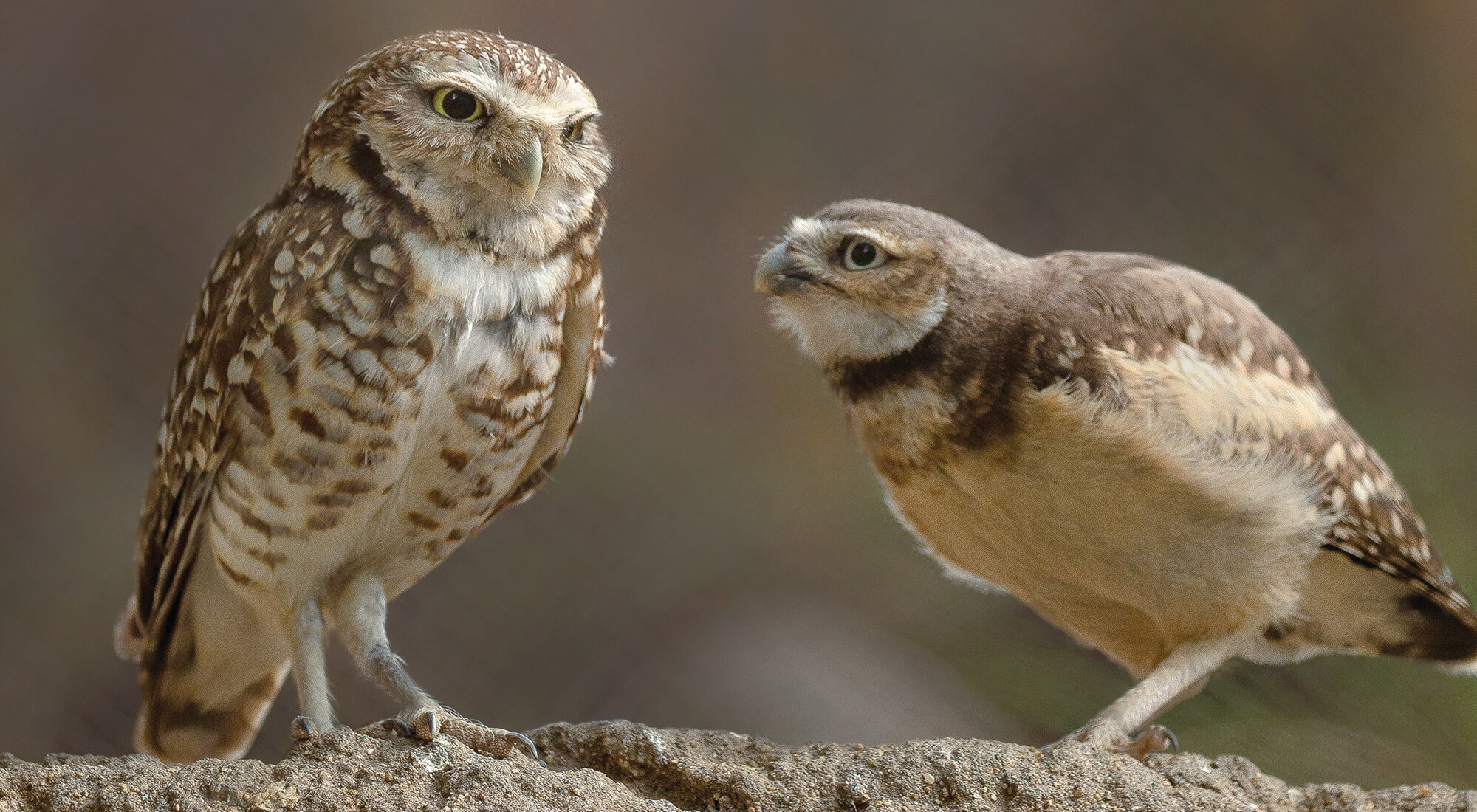
Whooo Are You?
The western burrowing owl is a grassland species that has been declining throughout its range in western North America for much of the past century due to changes in land use. This is particularly true in California, where ongoing urbanization and development of grasslands has led to loss and fragmentation of burrowing owl habitat, resulting in their current designation as a California Species of Special Concern. They also face reductions in habitat quality due to the proliferation of non-native grasses within the remaining grasslands of California. These tall, dense, non-native annual grasses (as opposed to more open native bunchgrasses) are not suitable for many native species without intense management like mowing or grazing, which require substantial financial and planning resources. In addition, the owls suffer from a loss of burrows due to removal of the fossorial (digging) animals they rely upon to create burrows. In San Diego County, California ground squirrels Otospermophilus beecheyi are the primary burrow engineers. However, California ground squirrels are also in decline, either through removal as a pest or from loss of habitat due to tall non-native grasses. Even though burrowing owls can tolerate low to moderate levels of disturbance from human activities, they are increasingly affected by suburban-adapted predators, such as ravens, that can prey on both adult and juvenile owls, and greatly reduce nest success and productivity.
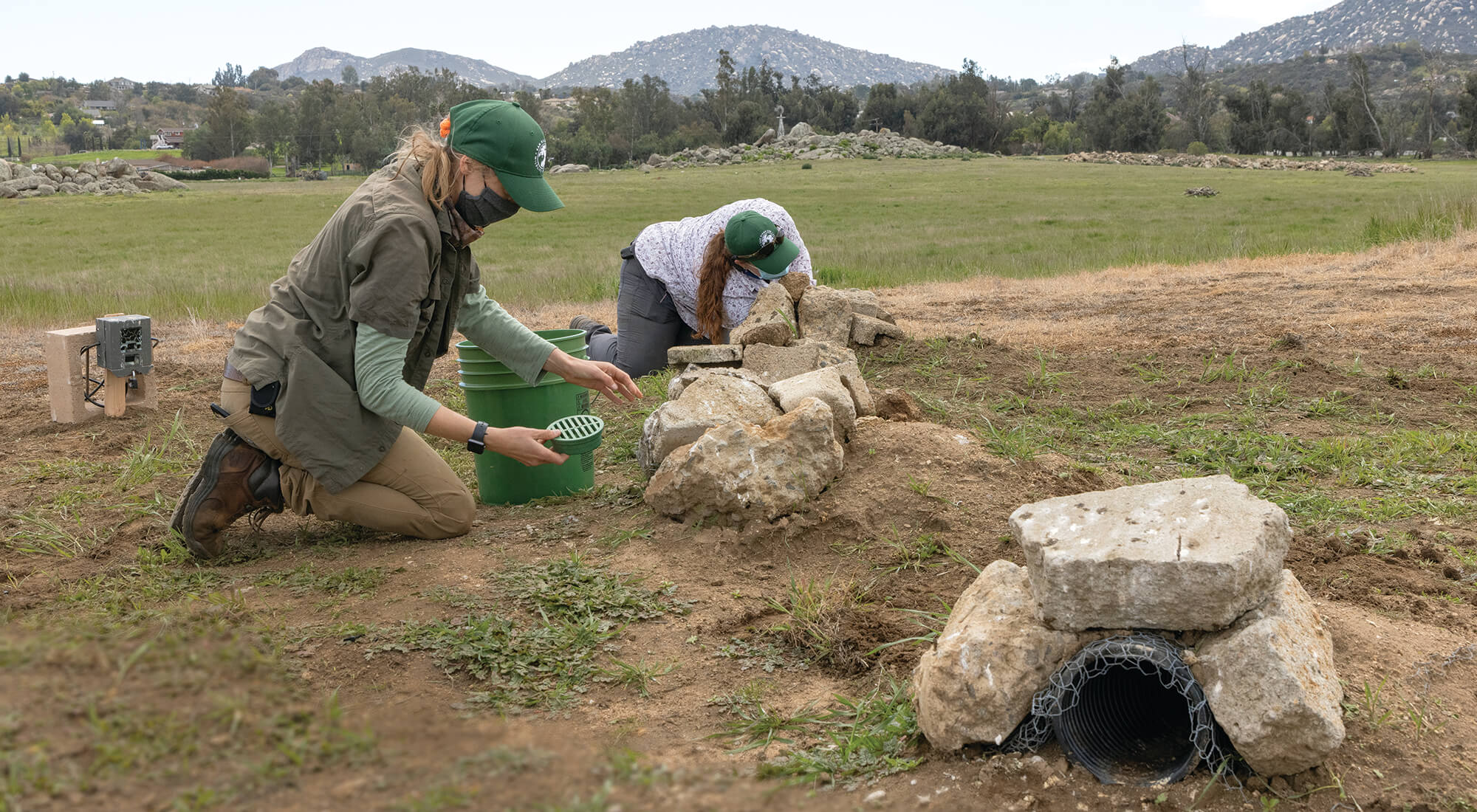
Collaboration—A Recipe for Success
Conservation work does not happen in a vacuum and often depends upon collaboration among many stakeholders. In San Diego, a countywide plan for conserving many different plant and animal species helps guide the efforts of government agencies, land managers, researchers, and conservationists. For the past 10 years, our conservation science team has been part of a working group that includes land and wildlife managers, nonprofit organizations, and biological consultants, and helps guide our research and carry out conservation planning for burrowing owls within the county. The result of this coordinated effort is a better understanding of how we can conserve burrowing owls in the county (and beyond) and has allowed us to take bold actions to reverse the decline of this iconic species.
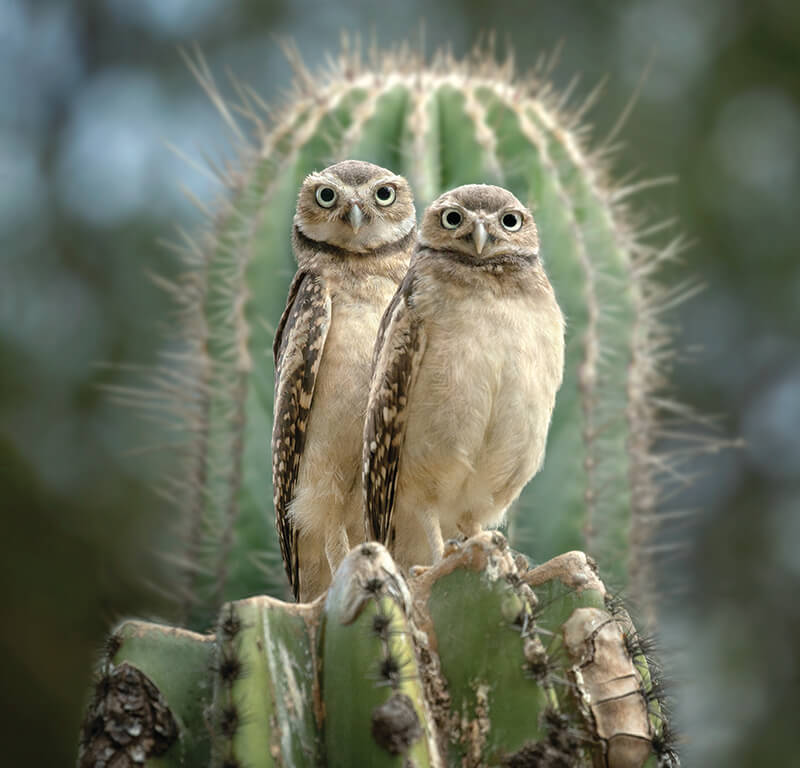
Conservation objectives for the burrowing owl population in the county include increasing the size of the population and spreading it out to more areas (what we call population “nodes”) as a sort of insurance policy. In order to accomplish this objective, two basic ingredients are needed: land and owls. This may sound straightforward but is certainly not simple. First, we need a sufficient amount of land with appropriate components such as food (invertebrates, small mammals, etc.) and shelter (burrows)—in short, habitat. And second, we need owls to move into that habitat.
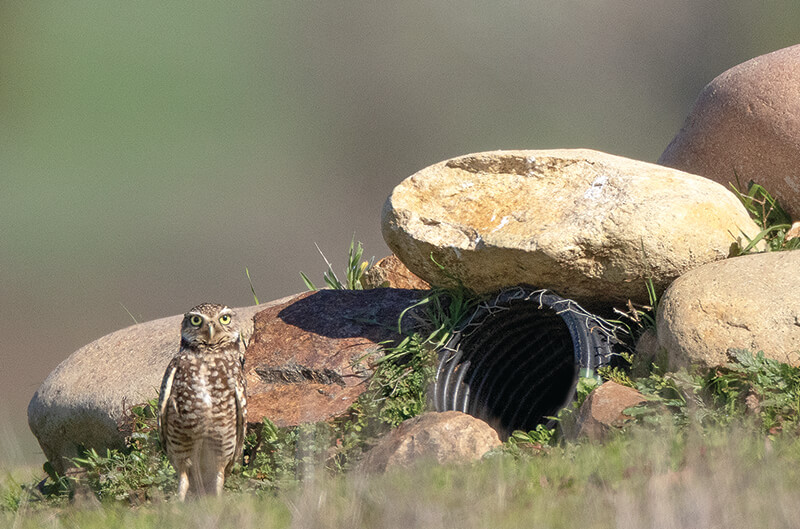
The first ingredient is supplied by our partners. Over the past 10 years, San Diego Zoo Wildlife Alliance and our working group collaborators have identified protected areas in the county that can provide owl habitat. Some of our partners, like the California Department of Fish and Wildlife and San Diego Habitat Conservancy, own and manage land for the purpose of providing protected habitat for native wildlife for generations to come. We have worked closely with these entities to prepare their lands to receive owls. They use cattle grazing and mowing to keep the grasses short, and create cover piles made of rocks or brush to help the ground squirrels disperse into new areas, creating more burrows for the owls. Our partners have allowed us to install artificial burrows that are part of the translocation process, and conduct maintenance on these burrows annually.
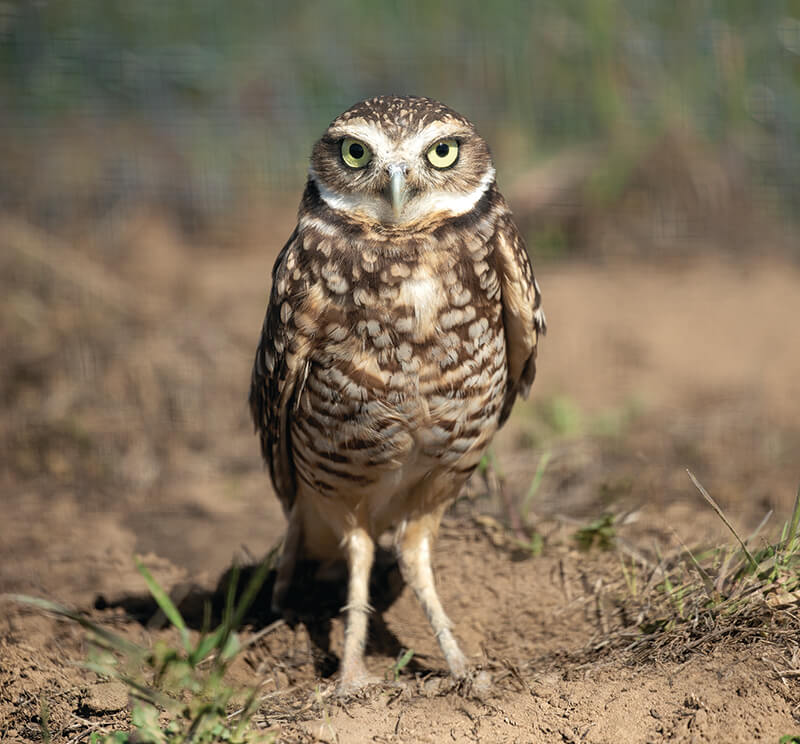
With our expertise in wildlife care, conservation breeding, and reintroduction, San Diego Zoo Wildlife Alliance is a natural fit to supply the second ingredient: owls. Sometimes, burrowing owls need to be moved out of harm’s way when land is being developed. In these situations, we often reintroduce owls from the development site to one of the protected areas identified as suitable for burrowing owls. But a small handful of owls impacted by development activities are brought into the San Diego Zoo Safari Park conservation breeding program, where they live for about two years. These owls usually raise one to two broods during their time in human care. Their offspring, and eventually they themselves, are released into protected areas to help bolster the burrowing owl population in the county.
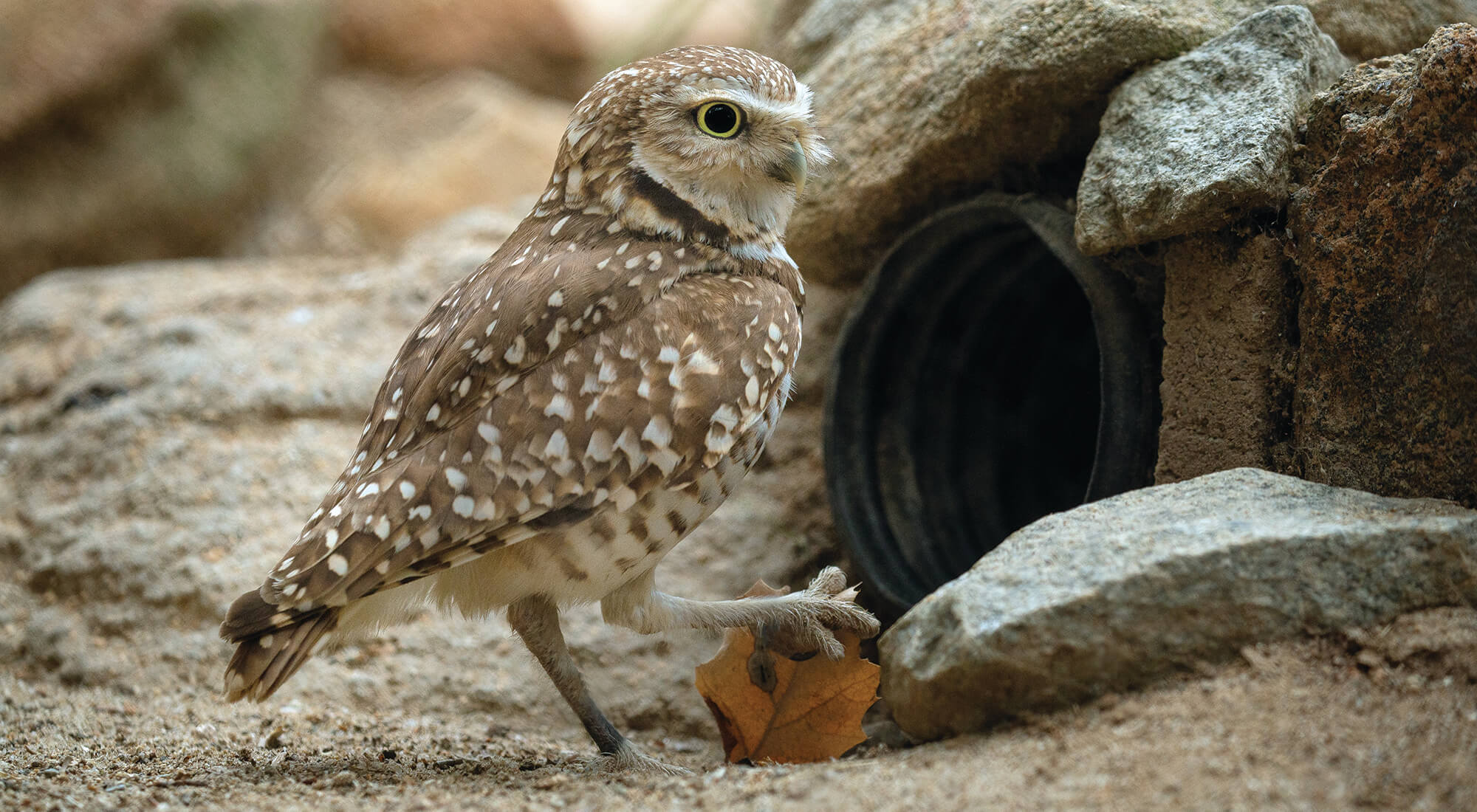
A Bright Future on the Horizon
We are now in our fourth year of breeding and releasing owls into these protected areas. Using a soft-release method that includes an acclimation period, provision of important social cues via recordings of burrowing owl vocalizations, and supplemental food during the breeding season, we have met our early benchmarks for successful establishment of new population nodes. At our first release site, translocated owls have taken up residence and bred in multiple years following translocation, and they have even attracted some non-translocated owls to live and breed in the colony. We have observed multiple generations of owls pairing up and successfully raising their own chicks. This spring marked the first translocation to our second release site, and so far, those owls are meeting the same early benchmarks.
San Diego Zoo Wildlife Alliance and our partners are committed to conserving the burrowing owl population in Southern California, so as you look out across those mesa tops, you don’t have to imagine a future without burrowing owls.
Colleen Wisinski, M.S., is conservation program manager in recovery ecology for SDZWA; Tammy Spratt is an SDZWA photographer.




